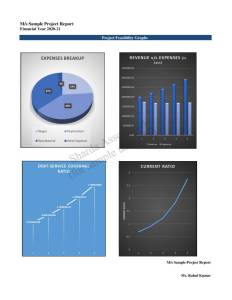Project Report For White Label ATM Franchisee
Introduction
The project report for White Label ATM Franchisee is as follows.
A white-label ATM is one that is owned and operated by a non-bank financial institution. The vast majority of white-label ATMs will be put in rural locations, with a small number being built in urban and semi-urban areas.
For example, Vakarangee has a three-year deadline to construct 15,000 white-label ATMs with a rural-to-urban ratio of 2:1. Tata Communications Payment Solutions (TCPSL) would install roughly 5,000 of the required 15,000 ATMs in metros and urban regions.
Because additional ATMs are needed in the region, the RBI has granted permission to seven non-banking financial organisations (NBFCs) to open white-label ATMs to aid financial inclusion. In metropolitan and semi-urban locations, there are various viable options for utilising commercial space to generate additional revenue via the white-label ATM method.
One method to make the most of your commercial space is to have an ATM franchise. This concept was introduced by TCPSL in collaboration with Franchise India. People will invest in and profit from an ATM franchise.
A franchise will earn Rs 15 for any cash withdrawal and Rs 5 for non-financial purchases. The return on investment is determined by the quantity of footfall generated at the ATM. The return is solely decided by the number of transactions completed at a specific ATM.
As the population of all Indian cities grows, so does the demand for ATMs, as having basic access to financial services has become a must. Seven NBFCs have recently been awarded permission to open white label ATMs by the RBI.
ATMs with the white mark are those run and controlled by non-banking financial firms (NBFCs). The RBI has mandated that all participating NBFCs open a certain number of white label ATMs, most of which will be in rural areas, with only a few in semi-urban and urban areas.
Market Potential Of White Label ATM Franchisee
Cash continues to be preferred and often the sole means of payment for India’s approximately 1.3 billion residents, especially in semi-urban and rural areas. While the number of debit cards issued has significantly increased recently, the number of ATMs has not, creating challenges for banks and aggravating customers.
India lags behind other markets in terms of ATM penetration. In India, there are 18 ATMs per lakh people. White Label ATMs (WLAs) was certified by the RBI to increase financial inclusion and expedite ATM adoption in the country. WLAs allow non-bank private entities to set up and operate their own ATM network in the country.
A WLA licence can be applied for by a non-bank corporation with a net worth of at least $100 million. The main purpose of permitting non-banks to operate WLAs was to increase the number of ATMs in semi-urban and rural areas, particularly in Tier III to VI areas where the bank-owned ATM network had reached saturation.
As part of the government’s financial inclusion programmes, such as the Jana Dhana Yojana and other Direct Benefit Transfers, more ATMs are needed in rural areas (DBT). Customers receive government incentives in the form of direct cash payments to their bank accounts, so ATMs are an important point of contact for getting cash quickly.
White Label ATMs, in essence, will supplement a variety of government programmes by providing much-needed services. The banking system would be severely strained by a growing economy and increased demand for financial services, rendering it unsustainable at its existing infrastructure level.
Customers in smaller towns and cities will need to be persuaded to use numerous payment methods across the board, therefore the ecosystem must spend in upgrading technology and informing consumers. The white-label ATM industry’s potential is expected to multiply due to connected infrastructure advancements.
Project Report Sample On White Label ATM Franchisee
Need Help?
Create 100% Bankable Project Report





